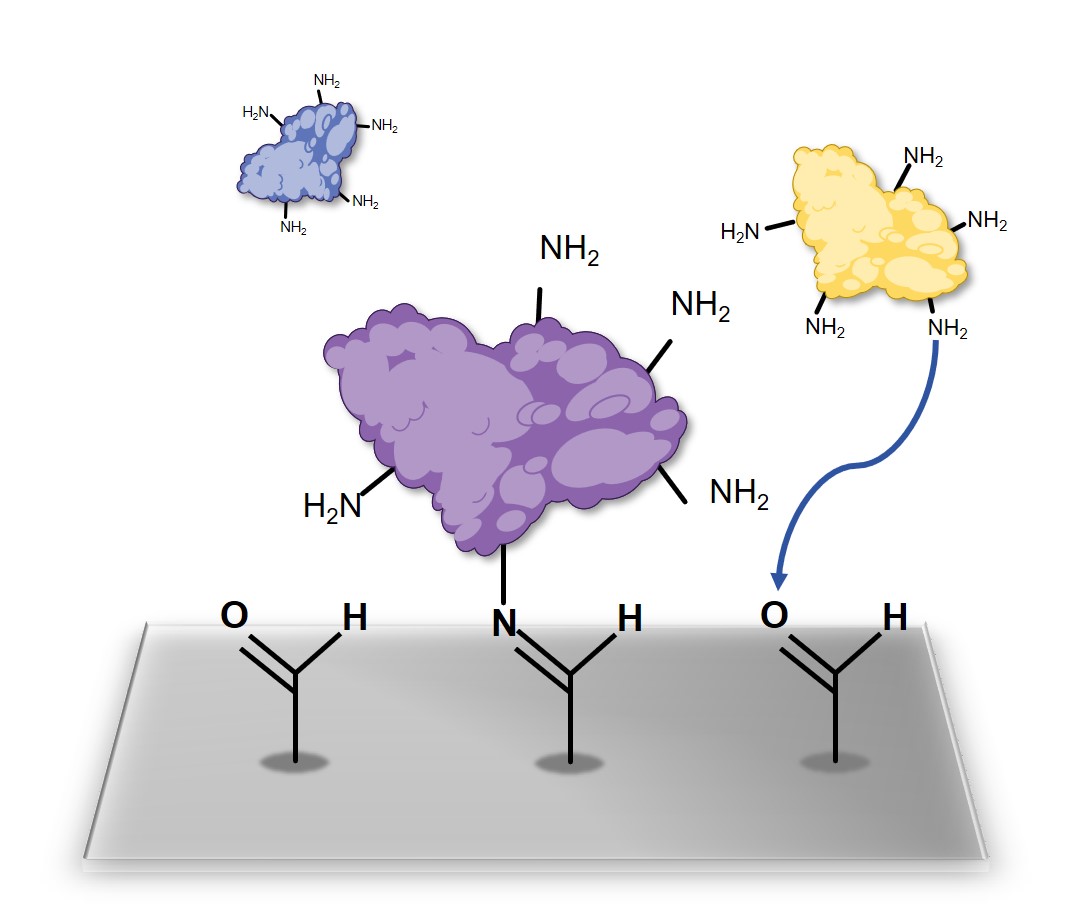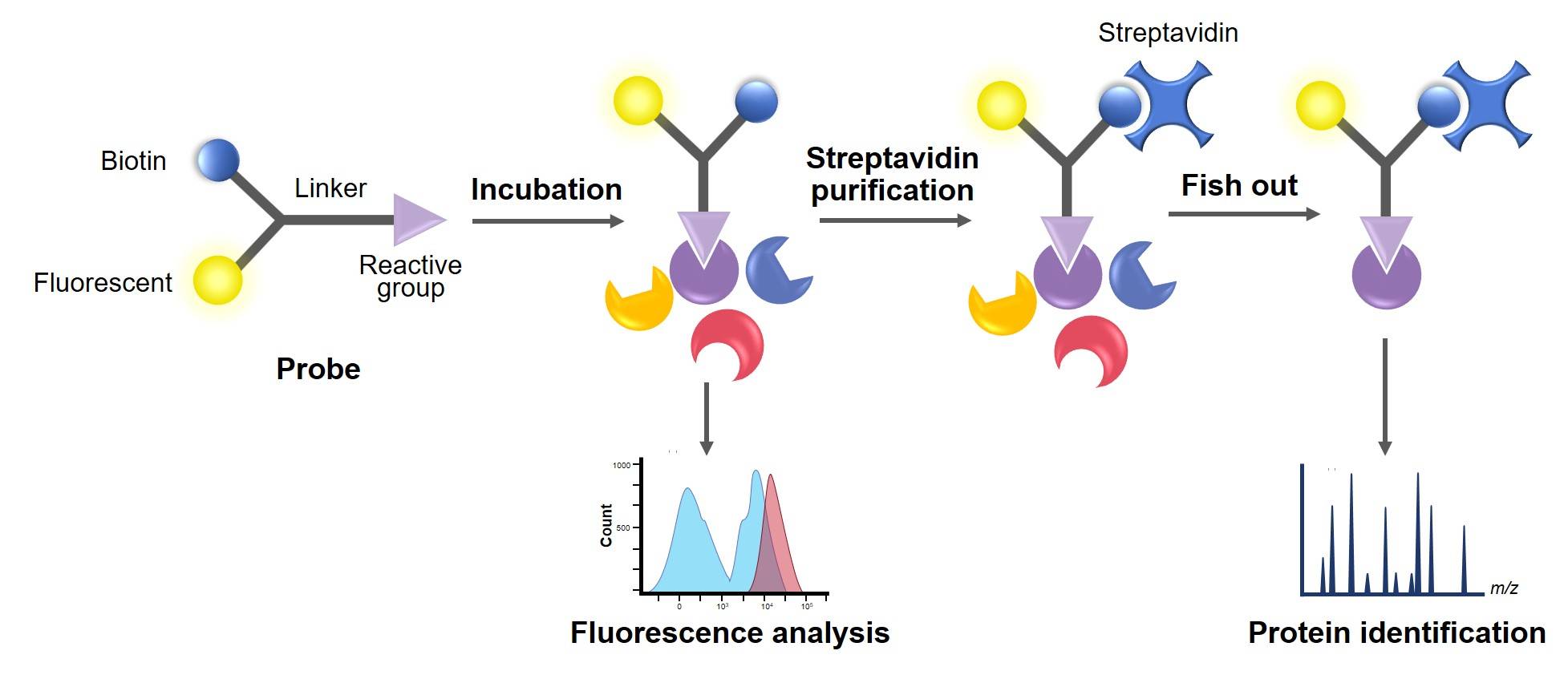Discovery of Biological Interactions
With professional knowledge and years of experience in conjugation, Creative Biolabs provides customized bioconjugation services including protein-protein conjugation, protein-fluorescence conjugation, small molecule conjugation and customized heterobifunctional crosslinkers, as well as purification and structural analyses of the novel bioconjugates. We believe that our services will fulfill your requirement of creating targeted bioconjugates.
Probes for Ligands Screening
Based on the affinity analysis of disease-related target proteins and ligands, screening potential compounds has become critical for early drug discovery. Ligands screening by labeling biomolecules is a preferred method. Activity-based protein profiling (ABPP) is a technique that utilizes chemical probes with specific structural and biological activities to study the structure and function of proteins. This method is used to identify the role of particular enzyme families in complex proteomics. Compound-centric chemical proteomics (CCCP) is another approach that utilizes bioactive small molecules as the foundation for synthesizing probes. These probes are then linked to biocompatible inert resins, enabling the study of target proteins.
High-Throughput Screening for Ligands
Ligands screening can also be achieved by high-throughput screening, which specifically immobilizes proteins on the surface of a microplate carrier by introducing active functional groups into biomolecules. For example, proteins are stabilized on the surface of aldehyde-derived glass slides by covalent bonding through amine groups (the α-amine at the N-terminals or the ε-amine of lysine side chains). Then, the bound proteins can be selectively recognized by the ligands and analyzed by techniques such as fluorescence imaging, time-of-flight mass spectrometry, and peptide mass fingerprinting. High-throughput screening is rapid and efficient for analyzing disease-related proteins and studying protein-protein or protein-drug interactions.
 Fig. 1 Protein microarray design based on amine and aldehyde reaction.
Fig. 1 Protein microarray design based on amine and aldehyde reaction.
Featured Conjugation Service for Ligands Screening
Creative Biolabs offers a wide range of cutting-edge probes, including fluorescent probes and biotin probes. By combining the benefits of both biotin and fluorescent labeling, our probes offer a unique solution, which allows for visualizing your target protein directly using the imaging effect of fluorescent groups, or utilizing the streptavidin-biotin system for target protein enrichment, purification, and detection. Our probes offer an unparalleled level of precision and efficiency for protein analysis.
 Fig. 2 Principle and method of chemical probe to detect target protein.
Fig. 2 Principle and method of chemical probe to detect target protein.
Our Advantages
![]()
With a highly collaborative approach, we strive to work closely with you, leveraging our expertise and resources to expand your achievements. If you are interested in our services, please do not hesitate to contact us for detailed information.
